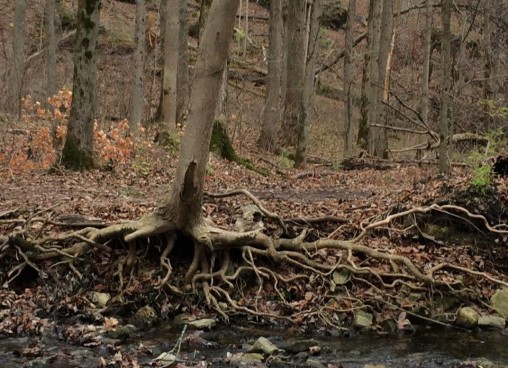
A new mathematical tool that promises to offer important insights into global warming by predicting soil formation and depth and the influence of soil on vegetation growth is revealed in a book co-authored by Wright State physics professor Allen Hunt.
The book — “Networks on Networks: The Physics of Geobiology and Geochemistry” — was written by Hunt and Stefano Manzoni of Stockholm University’s Bolin Centre for Climate Research.
The book shows that it is necessary to understand connections within water and solute transport paths from the soil through the roots and stems to the canopy, and from the pore scale up. By linking micro- and macro-scales, it provides a coherent framework to understand scale-dependent hydrologic, biogeochemical and ecological processes. The research was funded by the National Science Foundation.
“The book has a wide range of implications — in our education, in understanding biology, in understanding atmospheric composition and in our understanding of hydrology,” said Hunt, who teaches in the College of Science and Mathematics.
Chapters on vascular plant physiology and metabolism demonstrate evolutionary trade-offs in plant architecture and growth strategies to optimize nutrient and energy flows. These portions also help to show how plants may respond to changing climatic conditions.
The book then describes how the flow of water and nutrients in soil and vegetation are linked through root growth strategies and how that helps predict whole-plant growth rates as well as soil formation as the Earth’s crust weathers.
Weathering takes place when surface solutions percolate down through the ground until they meet the underlying rock. The weathering of silicate rocks removes carbon dioxide from the atmosphere, an important greenhouse gas that many scientists believe increases global temperatures, resulting in increased melting of the polar icecaps and changing weather patterns.
“If you want to predict the climate effects of the global carbon cycle, you have to understand how rapidly the soil is produced when silicate weathering occurs,” Hunt said. “Carbon taken up in the soil and by plant productivity is not present in the atmosphere, where it tends to raise the Earth’s temperature.”
The deeper the soil, the more carbon dioxide is absorbed. But the shallower the soil, the more rapidly soil is produced. So the ability to predict soil depth and the effects of soil on vegetation growth will enable scientists to forecast how much carbon dioxide will be absorbed over periods of days to millions of years.
Hunt said scientists have been trying for decades to quantify weathering and link plant productivity and its effect on the global carbon cycle. Up until now, they have had to rely on computer modeling.
“Our research results show that the mathematical tool we have is well-suited to attack the problem,” Hunt said. “We have the only method that can make predictions verified over such long time scales. Computer models cannot yet assimilate the vast range of length and time scales over which biotic and abiotic processes on the surface of the Earth interact with each other and affect the climate.”
Humans have enormous effects on erosion, soil production and the absorption of carbon dioxide due to farming, timber cutting, mining and the development of cities and roads.
“By predicting soil depth and soil constraints on vegetation growth rates, we have a much better idea how our activities will impact the future,” he said.
Hunt’s research is also part of a paper recently accepted for publication in the Vadose Zone Journal, which is published by the Soil Science Society of America.


 Wright State business professor, alumnus honored by regional technology organizations
Wright State business professor, alumnus honored by regional technology organizations  Wright State University Foundation awards 11 Students First Fund projects
Wright State University Foundation awards 11 Students First Fund projects  Gov. DeWine reappoints Board Treasurer Beth Ferris and names student Ella Vaught to Wright State Board of Trustees
Gov. DeWine reappoints Board Treasurer Beth Ferris and names student Ella Vaught to Wright State Board of Trustees  Joe Gruenberg’s 40-Year support for Wright State celebrated with Honorary Alumnus Award
Joe Gruenberg’s 40-Year support for Wright State celebrated with Honorary Alumnus Award  Wright State’s elementary education program earns A+ rating for math teacher training
Wright State’s elementary education program earns A+ rating for math teacher training 